Soviet HI-FI and its creators: Leningrad High End from the leading shipbuilder of the Central Research Institute “Morphyspribor”
The first post in the cycle about Soviet audio electronics was a publication about the amplifier “Brig 001”. It is generally accepted that the Soviet HI-FI began with this device. The amplifier was developed at the Leningrad Central Research Institute “Morphyspribor”, and Anatoly Lyhnitsky was named the creator in the article. Interestingly, many other developments were later created in this institution, which became bestsellers of the national hi-fi. Among others: vinyl player “Corvette 003”, a series of preamps and amplifiers with the same name, acoustic systems, etc.
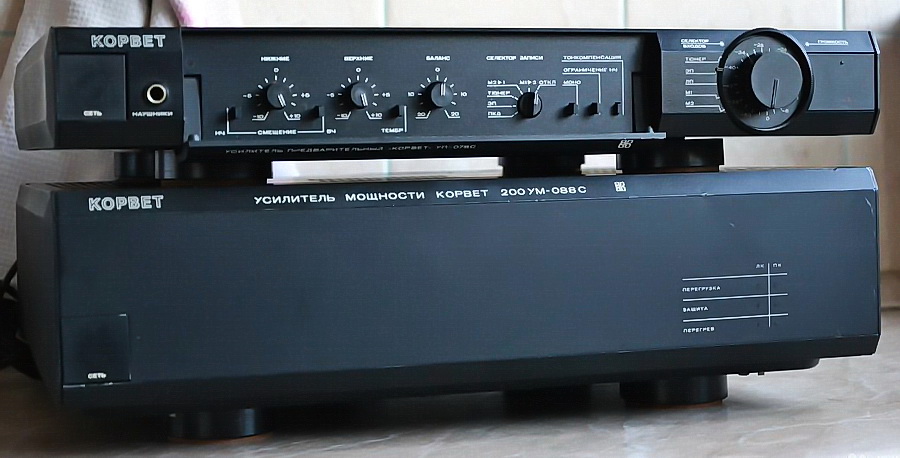
In the first article, negligible attention was paid to the lead engineer of Morphyspribor Vladimir Rataev, who made an impressive contribution to the development of Brig 001 and other devices of the Central Research Institute. It should be noted that this man along with Likhnitsky, Shushurin, Makarchuk, Levitsky, Sviridov and others can be considered one of the fathers of the Soviet highfay. It is also worth noting that, with respect to the first “Brig”, Likhnitsky was more of an ideologue and organizer of the direction, and Rataev was developing specific technical solutions.
The fate of the engineer was successful. After the collapse of the USSR, Rataev continued the development of professional amplifying equipment for concert venues and studios. Today he is the technical director of, perhaps, the only company that creates such equipment in Russia.
Vladimir Rataev graduated from the Leningrad Electrotechnical Institute and in 1973 began work in the St. Petersburg Central Research Institute Morphyspribor. This year, on the basis of the institute, a department of consumer goods was created, into which a young engineer fell. Alla Kalyaeva, Candidate of Technical Sciences, was the formal head of the department, the role of the ideologist of high fidelity of reproduction was assumed by the notorious Likhnitsky, while the burden of technical implementation basically fell on Vladimir Ratayev.
In general, the department employed about 20 people, ranging from designers and designers to banal clerks. For those who did not read the first material , I note that the backbone of the consumer electronics department at MorphisPribor was formed from a group of enthusiasts. Their main goal was the development and launch of the Soviet serial Hi-Fi class reproducing equipment. State cover for the department was provided by the head of the 10th Main Directorate of the Ministry of Shipbuilding Industry N. Sviridov. The official was a great lover of high-fidelity equipment and believed that its mass production was urgently needed in the country of the victorious developed socialism.
The first projects of the team were the amplifier “Brig 001” and the “Corvette 003” electrophone. To this day, there is an opinion that Anatoly Likhnitsky who did not have a specialized higher education over time, exaggerated his merits (especially in the creation of “Brig”), for which he is often criticized.

Brig 001
It is on the basis of Lihnitsky’s memories that the idea of the development of the first representatives of the hi-fi standard among Soviet technology is usually formed. Thus, a stereotype was created that it was them who made the most significant contribution, although it’s rather a matter of teamwork with an equal contribution of the main participants.
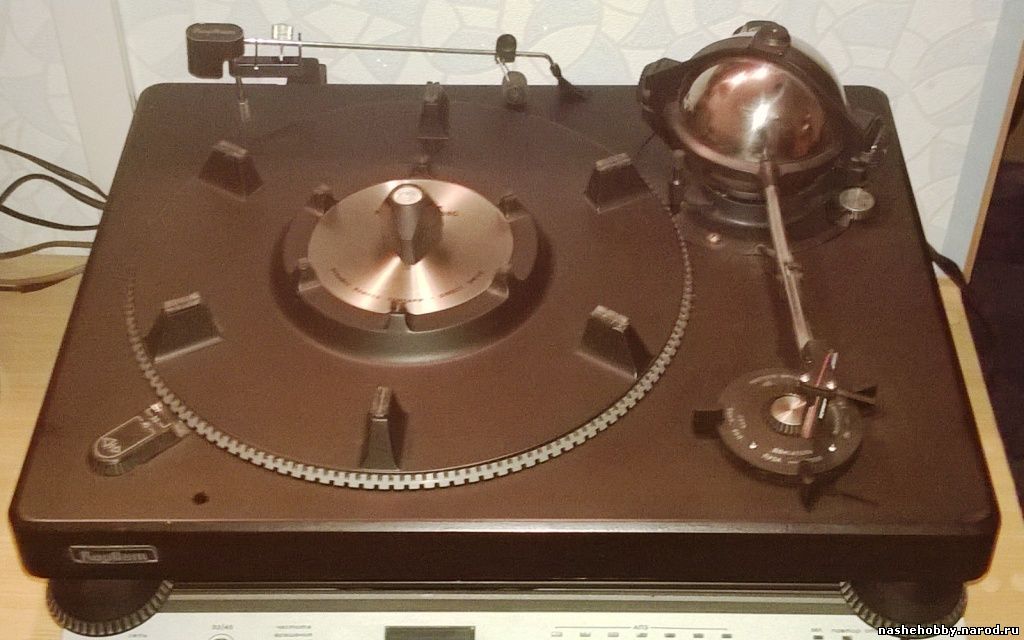
Corvette 003
In fairness it should be said that Likhnitsky does not rarely mention Rataev and even evaluates him as an experienced engineer, and describes the actions as independent.
To paraphrase Anatolia, it turns out that everything related to the circuitry in the framework of the chosen (or, according to some, borrowed from Marantz) Lihnitsky concept was made by Rataev.
In the mid-70s, the “Brig” and “Corvette” (player) appear. The devices fully justify the titanic efforts expended on them. Rataev gains valuable experience in the design of high fidelity transistor amplification. Further, under his leadership, there are many other devices.
By 1980, the year Rataev becomes the leading developer of the department. Such a career growth is preceded by a fundamental conflict with Likhnitsky, whose ideas seemed to the engineer archaic, and the career situation was the result of cronyism. As a result, according to some eyewitnesses, the conflict was resolved in favor of Rataev, in accordance with the principle “the road is young everywhere”. Likhnitsky, in turn, went to VNIIRPA.
During this period, the Central Research Institute “Morphyspribor” approves the development of a new series of amplifiers, traditionally named after the type of ship. Interestingly, like the first player created in the bowels of the department, the amplifiers were called “Corvette”.
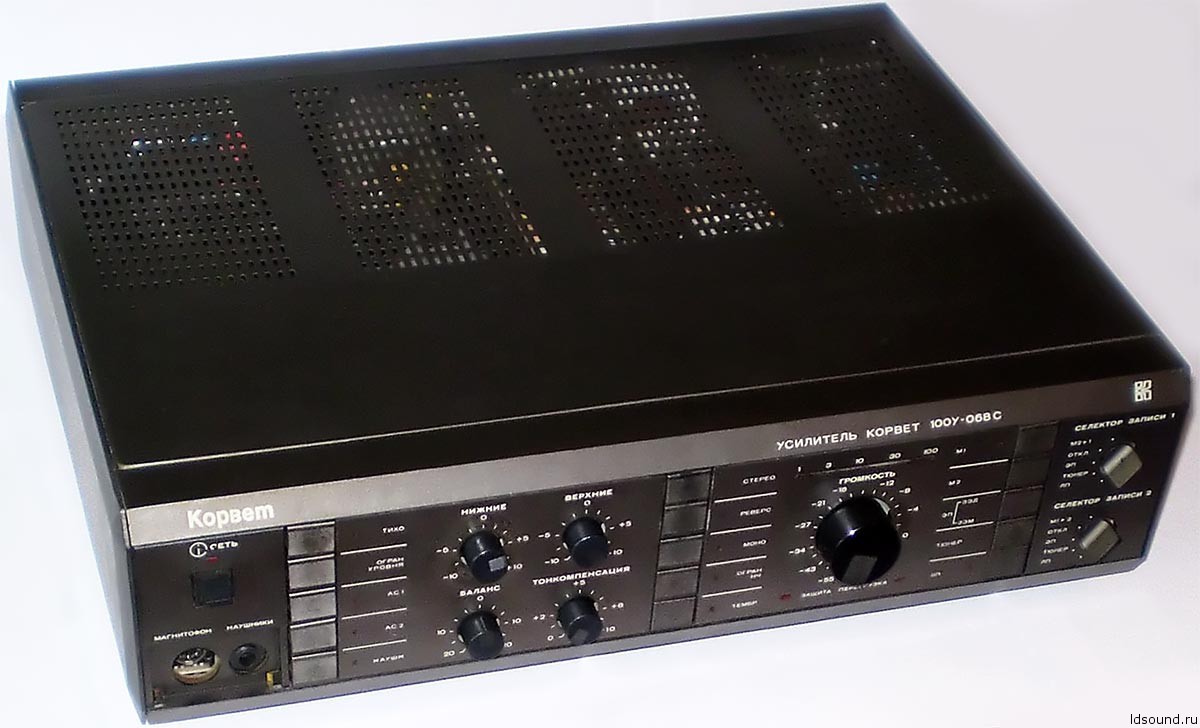
Amplifier "Corvette 068"
The Corvette 200UM-088 (better known as the “088th Corvette”) becomes the most significant for Rataev.

Corvette 200UM-088S and Preamplifier Corvette 078
For the Soviet amplification is practically unattainable ceiling:
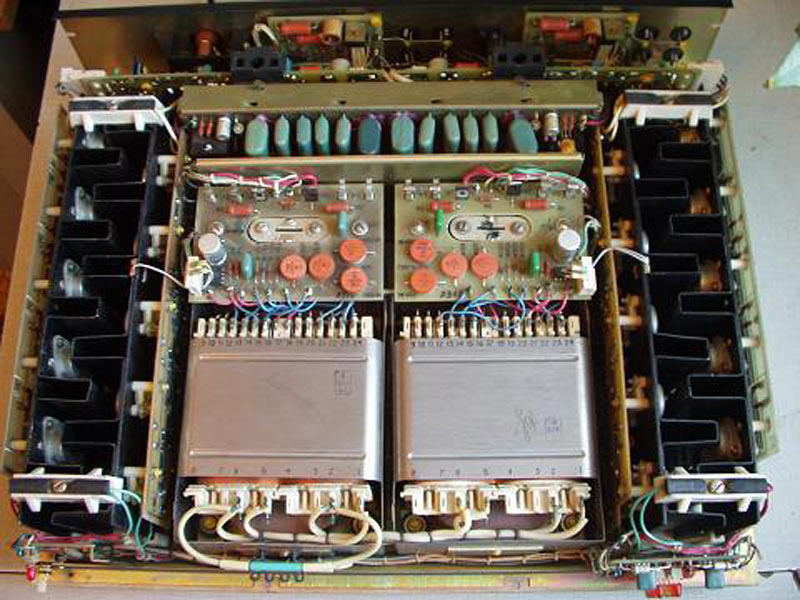
Corvette 200UM-088C inside
An unusual approach for Soviet technology was the use of the principle of double mono, which in the Soviet Union for the UMZCH of mass production was first used by Ratayev. According to some authors, we can safely consider this “Corvette 200UM-088C” as the first model of the domestic High End, as it significantly exceeded the low bar of the classic hi-fi standard.

Corvette 200UM-088S
According to some reports, work on the “088th Corvette” was carried out from 1982 to 1989. Only in 1990, the first amplifiers of this type came off the conveyors of the Ladoga Kirov factory. In 1992, one of the 088s came to the United States, where Walter Schofield, product manager at Cambrige Soundworks, had the pleasure of testing it. The result of the audition was the praise ode to the brainchild of Rataev in the magazine “Fortune” for May 1992, with a pathetic and loud headline “Stereo-beast from Russia”. Schofield particularly noted the quality of the bass response.
Rataev even stated that when designing the 088th Corvette, he and the team of “Morphyspribor” tried not to satisfy the aspirations of the consumer, but to beat one of the Guinness records. According to the recollections of Vladimir Rataev himself, the Central Research Institute “Morphyspribor” was an excellent school, in an interview with Russian Forbes, he said that it was this institution that taught him how to work.
According to Likhnitsky, Rataev began the development of the Corvettes as a response to his development at the VNIIRPA legendary mythical amplifier “Stalker”.
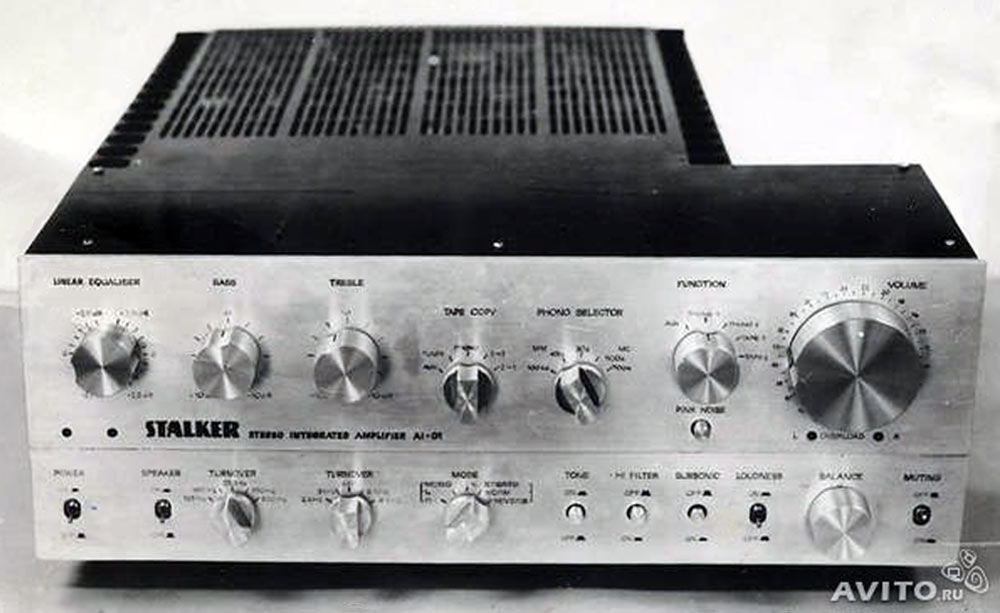
Later he evaluated the development of Rataev as follows:
What exactly the Corvette Likhnitsky wrote remains a mystery. Judging by some reports, Likhnitsky was very offended by the fact that Rataev’s device went into series, and “Stalker” was found to be serially unsuitable.
Around the same years, Rataev developed original preamp models for use with the 088th (Corvette 028 and 078). A specially created sector has developed the Corvette 75AC-001 and Kliver 75AC-001 speakers for use with Corvette amplifiers.
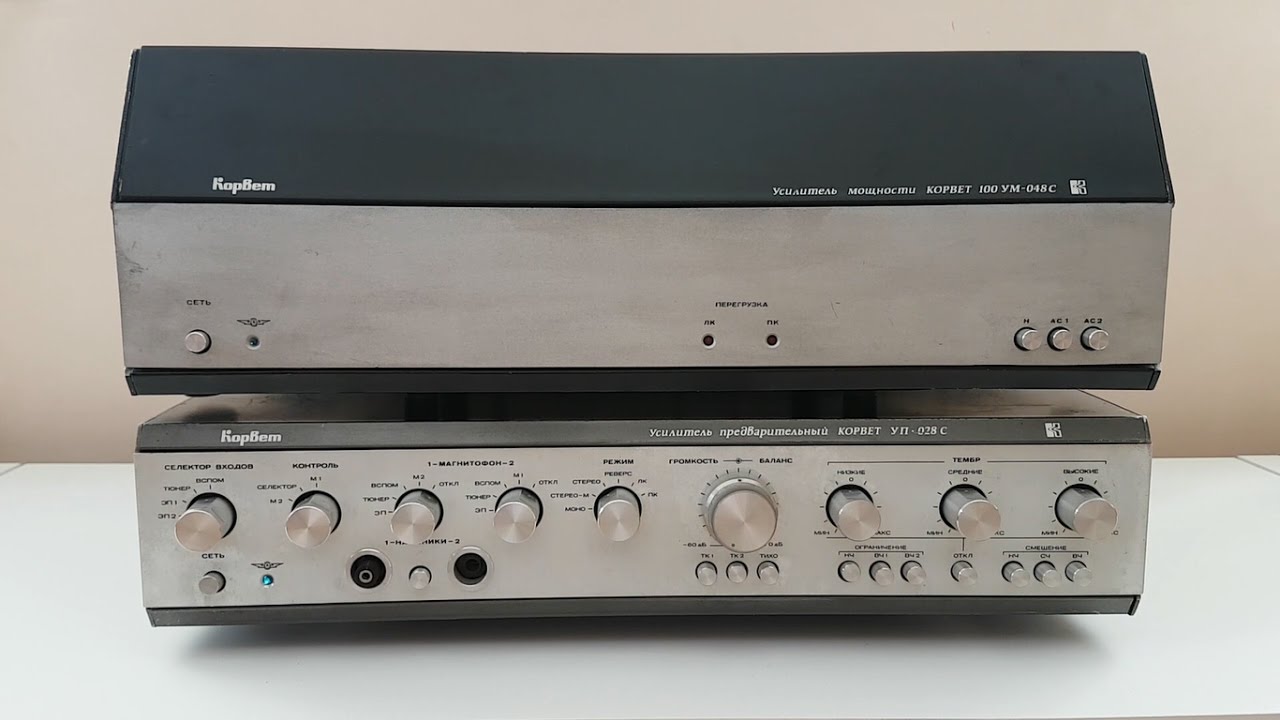
In 1987, Rataev was able to smell the money, which brought the perestroika wind of change. Classmate Rataeva sound engineer Fyodor Kuruzbavuer proposed a talented engineer to develop professional concert amplifiers. Since 1985, the trade deficit in the USSR has worsened. Among other things, there is a big shortage of high-quality concert equipment in the country, while the needs and number of musical groups are constantly growing. For two years, Rataev is developing a new concert amplifier and organizing small-scale production.
For the American amplifier Peavey CS-800, which was fallen in love in the 80s with the sound equipment of large sites, could pay 15,000 rubles (100 average wages of an engineer). The cost of the Rataev counterpart was 10 times lower - 1,500 rubles. Kuruzbavuer hastily organizes sales.

Peavey CS-800
By 1989, the companions were able to assemble a small series of 500 amplifiers. The assembly was carried out by defense enterprises of Leningrad and the Leningrad Region. Experienced skilled workers of the Soviet defense industry guaranteed accurate compliance with the recommendations of the developer. Tuning amplifiers Rataev produced independently. According to the memoirs of Karusbavuer, all 500 amplifiers were purchased in just a couple of weeks.
These first installments of amplifiers of 1989 can be considered the first series of the now healthy company “Neva Audio”. Today, Vladimir Rataev works as technical director of this company.
Since its foundation by Karusbaver and Rataev, the company has never changed its profile and has been engaged in the production of studio and concert amplifiers for all 27 years of its existence. Today "Neva Audio" is the only company in Russia specializing in the release of concert and studio UMZCH.
Vladimir Rataev is undoubtedly one of the first Soviet engineers who were able to successfully develop and introduce Hi-Fi devices into mass production. Not to mention his contribution would be a mistake. Rataev’s success in developing professional amplifiers, as a director of Neva Audio, confirms his engineering talent and the quality of Soviet technical education. The works of the engineer received a gold medal at the International Fair in Leipzig, one bronze, two silver and gold medals of the Exhibition of Economic Achievements, innovative solutions are marked by twenty copyright certificates.
I know that among people who are interested in the history of hi-fi development in the USSR, the debate about the significant contribution of certain characters to the “common cause” does not abate. For example, they argue a lot about who invested more in the “Brig” of Rataev or Likhnitsky. Only one thing is obvious to me that this contribution was, and that these people contributed to the emergence of a qualitatively new Soviet technique that could satisfy the growing needs of domestic music lovers and compete on an equal footing with foreign counterparts.
Jeans and links
A wide range of amplifiers , receivers and other sound-reproducing equipment is presented in our catalog . You can purchase both transistor and lamp UMZCH as well as high fidelity speaker systems from us .
In the post used photographic materials of the following resources:
ldsound.ru
i.ytimg.com
forum.cxem.net
hi-fi.ru
www.rw6ase.narod.ru
en.audiofanzine.com

In the first article, negligible attention was paid to the lead engineer of Morphyspribor Vladimir Rataev, who made an impressive contribution to the development of Brig 001 and other devices of the Central Research Institute. It should be noted that this man along with Likhnitsky, Shushurin, Makarchuk, Levitsky, Sviridov and others can be considered one of the fathers of the Soviet highfay. It is also worth noting that, with respect to the first “Brig”, Likhnitsky was more of an ideologue and organizer of the direction, and Rataev was developing specific technical solutions.
The fate of the engineer was successful. After the collapse of the USSR, Rataev continued the development of professional amplifying equipment for concert venues and studios. Today he is the technical director of, perhaps, the only company that creates such equipment in Russia.
At the origins of the direction
Vladimir Rataev graduated from the Leningrad Electrotechnical Institute and in 1973 began work in the St. Petersburg Central Research Institute Morphyspribor. This year, on the basis of the institute, a department of consumer goods was created, into which a young engineer fell. Alla Kalyaeva, Candidate of Technical Sciences, was the formal head of the department, the role of the ideologist of high fidelity of reproduction was assumed by the notorious Likhnitsky, while the burden of technical implementation basically fell on Vladimir Ratayev.
In general, the department employed about 20 people, ranging from designers and designers to banal clerks. For those who did not read the first material , I note that the backbone of the consumer electronics department at MorphisPribor was formed from a group of enthusiasts. Their main goal was the development and launch of the Soviet serial Hi-Fi class reproducing equipment. State cover for the department was provided by the head of the 10th Main Directorate of the Ministry of Shipbuilding Industry N. Sviridov. The official was a great lover of high-fidelity equipment and believed that its mass production was urgently needed in the country of the victorious developed socialism.
The first projects of the team were the amplifier “Brig 001” and the “Corvette 003” electrophone. To this day, there is an opinion that Anatoly Likhnitsky who did not have a specialized higher education over time, exaggerated his merits (especially in the creation of “Brig”), for which he is often criticized.

Brig 001
It is on the basis of Lihnitsky’s memories that the idea of the development of the first representatives of the hi-fi standard among Soviet technology is usually formed. Thus, a stereotype was created that it was them who made the most significant contribution, although it’s rather a matter of teamwork with an equal contribution of the main participants.

Corvette 003
In fairness it should be said that Likhnitsky does not rarely mention Rataev and even evaluates him as an experienced engineer, and describes the actions as independent.
“... Vladimir Rataev, who was part of the sector’s elite, was a completely independent amplifier specialist ...”
To paraphrase Anatolia, it turns out that everything related to the circuitry in the framework of the chosen (or, according to some, borrowed from Marantz) Lihnitsky concept was made by Rataev.
In the mid-70s, the “Brig” and “Corvette” (player) appear. The devices fully justify the titanic efforts expended on them. Rataev gains valuable experience in the design of high fidelity transistor amplification. Further, under his leadership, there are many other devices.
Socialist competition and power champ
By 1980, the year Rataev becomes the leading developer of the department. Such a career growth is preceded by a fundamental conflict with Likhnitsky, whose ideas seemed to the engineer archaic, and the career situation was the result of cronyism. As a result, according to some eyewitnesses, the conflict was resolved in favor of Rataev, in accordance with the principle “the road is young everywhere”. Likhnitsky, in turn, went to VNIIRPA.
During this period, the Central Research Institute “Morphyspribor” approves the development of a new series of amplifiers, traditionally named after the type of ship. Interestingly, like the first player created in the bowels of the department, the amplifiers were called “Corvette”.

Amplifier "Corvette 068"
The Corvette 200UM-088 (better known as the “088th Corvette”) becomes the most significant for Rataev.

Corvette 200UM-088S and Preamplifier Corvette 078
For the Soviet amplification is practically unattainable ceiling:
- The nominal output power per channel (at R = 4 ohms) is 260 watts.
- The nominal output power per channel (with R = 8 ohms) is 170 watts.
- The operating frequency range is 20 ... 20000 Hz (+ - 2 dB).
- Ratio signal / background = 110 dB.
- SOI - less than 0.1%.
- Input resistance is 47 kΩ.
- The power consumed from the network - from 200 to 500 watts.
- The dimensions of the amplifier are 430x375x130 mm.

Corvette 200UM-088C inside
An unusual approach for Soviet technology was the use of the principle of double mono, which in the Soviet Union for the UMZCH of mass production was first used by Ratayev. According to some authors, we can safely consider this “Corvette 200UM-088C” as the first model of the domestic High End, as it significantly exceeded the low bar of the classic hi-fi standard.

Corvette 200UM-088S
According to some reports, work on the “088th Corvette” was carried out from 1982 to 1989. Only in 1990, the first amplifiers of this type came off the conveyors of the Ladoga Kirov factory. In 1992, one of the 088s came to the United States, where Walter Schofield, product manager at Cambrige Soundworks, had the pleasure of testing it. The result of the audition was the praise ode to the brainchild of Rataev in the magazine “Fortune” for May 1992, with a pathetic and loud headline “Stereo-beast from Russia”. Schofield particularly noted the quality of the bass response.
Rataev even stated that when designing the 088th Corvette, he and the team of “Morphyspribor” tried not to satisfy the aspirations of the consumer, but to beat one of the Guinness records. According to the recollections of Vladimir Rataev himself, the Central Research Institute “Morphyspribor” was an excellent school, in an interview with Russian Forbes, he said that it was this institution that taught him how to work.
According to Likhnitsky, Rataev began the development of the Corvettes as a response to his development at the VNIIRPA legendary mythical amplifier “Stalker”.

Later he evaluated the development of Rataev as follows:
“The competition lasted about three years. As a result, two stand-alone amplifiers Stalker (IRPA) and Corvette No. ... were born. (Morphyspribor) with very close technical parameters, which was confirmed in writing by Struve, who replaced me at the place of the head of the Morphological Instrument Development Sector. ”
What exactly the Corvette Likhnitsky wrote remains a mystery. Judging by some reports, Likhnitsky was very offended by the fact that Rataev’s device went into series, and “Stalker” was found to be serially unsuitable.
Around the same years, Rataev developed original preamp models for use with the 088th (Corvette 028 and 078). A specially created sector has developed the Corvette 75AC-001 and Kliver 75AC-001 speakers for use with Corvette amplifiers.

Cooperation as a source of income for an engineer
In 1987, Rataev was able to smell the money, which brought the perestroika wind of change. Classmate Rataeva sound engineer Fyodor Kuruzbavuer proposed a talented engineer to develop professional concert amplifiers. Since 1985, the trade deficit in the USSR has worsened. Among other things, there is a big shortage of high-quality concert equipment in the country, while the needs and number of musical groups are constantly growing. For two years, Rataev is developing a new concert amplifier and organizing small-scale production.
For the American amplifier Peavey CS-800, which was fallen in love in the 80s with the sound equipment of large sites, could pay 15,000 rubles (100 average wages of an engineer). The cost of the Rataev counterpart was 10 times lower - 1,500 rubles. Kuruzbavuer hastily organizes sales.

Peavey CS-800
By 1989, the companions were able to assemble a small series of 500 amplifiers. The assembly was carried out by defense enterprises of Leningrad and the Leningrad Region. Experienced skilled workers of the Soviet defense industry guaranteed accurate compliance with the recommendations of the developer. Tuning amplifiers Rataev produced independently. According to the memoirs of Karusbavuer, all 500 amplifiers were purchased in just a couple of weeks.
These first installments of amplifiers of 1989 can be considered the first series of the now healthy company “Neva Audio”. Today, Vladimir Rataev works as technical director of this company.
Since its foundation by Karusbaver and Rataev, the company has never changed its profile and has been engaged in the production of studio and concert amplifiers for all 27 years of its existence. Today "Neva Audio" is the only company in Russia specializing in the release of concert and studio UMZCH.
Total
Vladimir Rataev is undoubtedly one of the first Soviet engineers who were able to successfully develop and introduce Hi-Fi devices into mass production. Not to mention his contribution would be a mistake. Rataev’s success in developing professional amplifiers, as a director of Neva Audio, confirms his engineering talent and the quality of Soviet technical education. The works of the engineer received a gold medal at the International Fair in Leipzig, one bronze, two silver and gold medals of the Exhibition of Economic Achievements, innovative solutions are marked by twenty copyright certificates.
I know that among people who are interested in the history of hi-fi development in the USSR, the debate about the significant contribution of certain characters to the “common cause” does not abate. For example, they argue a lot about who invested more in the “Brig” of Rataev or Likhnitsky. Only one thing is obvious to me that this contribution was, and that these people contributed to the emergence of a qualitatively new Soviet technique that could satisfy the growing needs of domestic music lovers and compete on an equal footing with foreign counterparts.
Jeans and links
A wide range of amplifiers , receivers and other sound-reproducing equipment is presented in our catalog . You can purchase both transistor and lamp UMZCH as well as high fidelity speaker systems from us .
In the post used photographic materials of the following resources:
ldsound.ru
i.ytimg.com
forum.cxem.net
hi-fi.ru
www.rw6ase.narod.ru
en.audiofanzine.com
All Articles